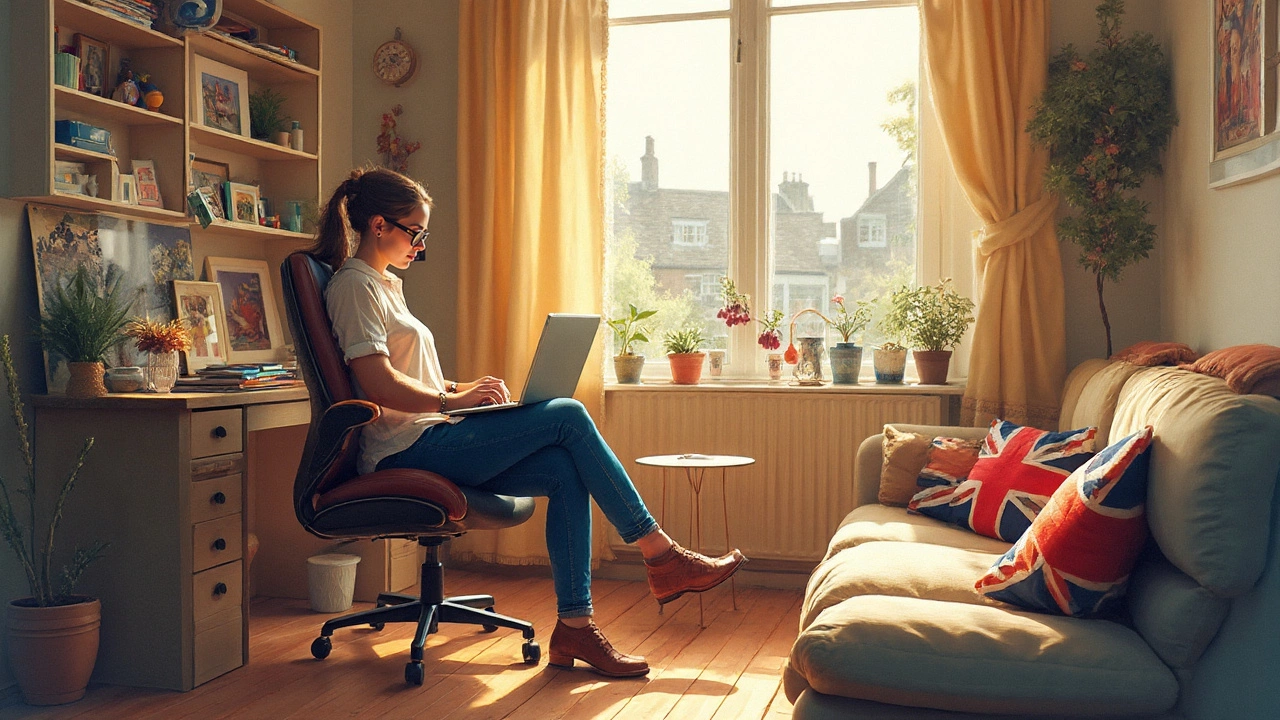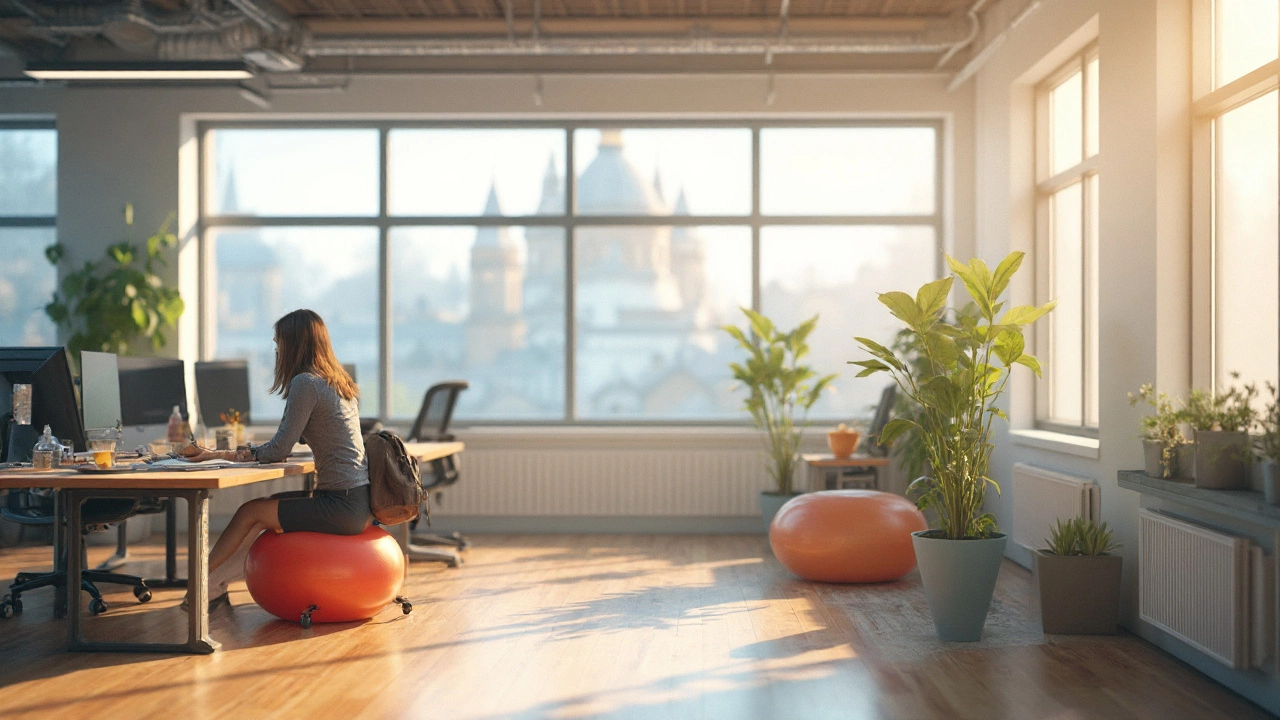If you sit all day in a typical office chair, you know the aches, the restless legs, maybe even a creeping sense that there’s got to be a better way. It turns out, a standard chair isn’t the only answer for working at a desk—and it may not even be the healthiest. Many people are waking up to the idea that shaking up your seating can fire up your productivity, help your posture, and keep your backside (and your mind) from going numb by mid-afternoon. Don’t think you’re stuck in a chair-shaped rut; the list of office chair alternatives gets creative, with some options you’ve probably never even considered.
Why Traditional Office Chairs Fall Short
The classic office chair gets way more blame—and way more attention—than it probably needs. Still, let’s call it out: Standard chairs, with their molded seats and fixed backs, can work against our bodies’ natural urge to move. Sitting for hours compresses your spine, tightens hip flexors, and leads to all sorts of annoyances, from slouching shoulders to stiff lower backs. According to the CDC, around 25% of people who work desk jobs complain of back pain—and that's just the ones reporting it. The culprit? Pretty often, it’s a chair designed for everyone and truly fitting no one.
Modern office job culture didn’t really take off until the 20th century, and, oddly enough, neither did chronic low back pain rates. Coincidence? Hard to say for sure, but experts point to prolonged sitting as a major factor in back strain, neck pain, and even poor circulation. A 2019 study out of Stanford found that using only one style of office chair—even an expensive ergonomic one—doesn’t cut it for most people. People who switched up their seating through the day actually reported less fatigue and fewer aches.
Let’s face it: not every body is built the same. A six-foot-tall cyclist isn’t going to need the same seat as a five-foot-tall accountant, so why would we all use the same chair? Our bodies thrive on change and movement, not just the perfect lumbar support. It’s why even the best office chairs sometimes fail to keep us comfortable all day.
Let’s not ignore the stats either: A study published in the Journal of Medical Internet Research stated that office workers who break up their sitting at least every 30 minutes have way less lower back and neck pain. Another point? Static seating can actually make you more tired as the day goes on, which is counterintuitive for a “productivity-focused” setup.
Since office chair manufacturers aren’t exactly redesigning the wheel every year, people have started inventing their own fixes—think yoga balls, stools, benches, even standing for part of the day. The goal isn’t just novelty. It’s switching gears, getting muscles moving, and playing to your body’s strengths. So, if standard office seating fails you, it’s not your fault. It’s probably the chair’s.

Creative and Proven Alternatives to Office Chairs
If you’re ready to try something besides your rolling chair, you might be surprised by just how many options exist. It makes sense—when people started working from home en masse, they didn’t always have a traditional office chair at their fingertips, so improvising became common.
Let’s talk about some of the alternatives people swear by:
- Exercise/Yoga Balls: Think of these as the jack-of-all-trades option. They engage your core, force you to sit upright, and, hey, you can bounce a little between emails. One warning: they take some getting used to, and they sit low to the ground, so desk height is important.
- Kneeling Chairs: These take the pressure off your spine and distribute your weight between your knees and hips. The posture feels odd at first—imagine kneeling at church but with cushioned support. People with back problems rave about these because they encourage a straighter spine.
- Standing Desks (with or without stools): This is the big trend of the last decade. Standing burns more calories than sitting and may lower your risk of back pain, especially if you mix in some pacing, stretching, or the occasional squat.
- Saddle Stools: Designed to mimic horseback riding, these stools position your legs apart and slightly dropped, keeping your hips open and spine more aligned. They look a bit odd, but a lot of physical therapists recommend them.
- Balance Boards: Pair these with a standing desk. They challenge your balance and engage tiny stabilizer muscles you never knew you had (small warning: don’t try these in socks on a tiled floor unless you like slapstick comedy).
- Bean Bag Chairs: Okay, not for everyone, but if your work is more writing and less typing, bean bags are incredibly comfortable for short bursts. They mold to your shape, which isn’t ergonomic so much as just…nice.
- Kneel-and-Sit Stools: Like a cross between a kneeling chair and a standard stool, they let you shift between sitting and kneeling all day. If you fidget, this is for you.
- Floor Desks or Tatami Setups: Drawing from Japanese office setups, more folks in the West are experimenting with sitting on cushions or tatami mats at low desks. This can do wonders for hip mobility but takes patience and is best if you don’t mind flexible sitting positions.
How about less obvious choices? Some swap their work chair for an armless wooden dining chair or even a sturdy milk crate with a cushion. Others make do with a sturdy bench, pouf, or even a fitness stepper (no, really). People with smaller spaces sometimes sit on the edge of their bed using a lap desk.
If you want to break it down by comfort, price, and posture-improving potential, check out the handy comparison below:
| Alternative | Cost | Posture Benefits | Portability | Best Use Duration |
|---|---|---|---|---|
| Yoga Ball | $20 - $50 | Engages core, promotes active sitting | High | Short to medium sessions |
| Kneeling Chair | $70 - $200 | Reduces back pressure, supports neutral spine | Medium | Long sessions (with breaks) |
| Standing Desk | $100 - $700+ | Alleviates sedentary risks, increases alertness | Varies | All-day, with switching |
| Saddle Stool | $80 - $400 | Opens hips, helps posture | High | Medium sessions |
| Floor Mat/Cushion | $10 - $100 | Boosts movement, improves flexibility | High | Short bursts |
| Bean Bag Chair | $30 - $150 | Comfort, not support | Medium | Short sessions |
People who switch things up regularly—maybe a yoga ball for an hour, then a kneeling chair, then some standing—report less soreness than those who stay glued to a single seat. And none of these options requires a big insurance payout if something breaks; most are affordable and easy to try before you commit.

Tips to Make the Most of Your Office Chair Alternative
Switching out your office chair alternatives can change the way you work, but only if you do it right. Trust me, it’s tempting to try every quirky seat out there and set up an Instagram-worthy workspace—but your body has to like it too. Even the perfect yoga ball means nothing if you’re slouching or craning your neck at an awkward angle.
- Mix Up Your Seating: Rotate between options during your day if possible. Start your morning at a standing desk. Take calls on a yoga ball. Do your emails perched on a kneeling chair.
- Desk Height Matters: Most alternatives work best if your desktop is at elbow height when your arms are relaxed. Adjustable desks—or even simple risers—help you get your setup right.
- Re-think Accessories: Footrests, anti-fatigue mats, and monitor risers aren’t just office supply junk. They make transitions smoother and help you hold healthy positions longer.
- Don’t Ignore Breaks: Take standing or stretching breaks every 30-60 minutes. Standing desks don’t erase the need for movement; if anything, they make you crave it more.
- Pay Attention to Your Body: Muscle aches, tingling, or numbness? That means you need to move, adjust, or switch it up. No seating option should force you to power through pain.
- Start Slow with New Setups: Kneeling chairs or yoga balls use muscles you’ve probably ignored for years. Start with 15-30 minutes at a time, working up as it gets easier.
- Check Out Hacks for DIY Alternatives: People get creative—think stacking pillows on a low bench, or adapting a sturdy box as a footrest. If it feels comfortable and lets you focus, it’s valid. Just keep safety in mind.
- Watch for Wobble: Moving perch, balance board, or unstable seat? Keep sharp corners and glass surfaces away—just in case you roll off while grabbing your coffee.
What’s surprising is how fast your body can adapt. Within a week or two of using an alternative, those weird aches melt away, and you may find energy levels rising. Many people notice their lower back feels looser after standing a few hours per day, or their focus sticks around longer after sitting on a yoga ball. Shaking up the “sit-down, head-down” routine simply works for comfort, posture, and, honestly, boredom.
And if anyone raises an eyebrow at your bumpy new chair or standing desk setup, remind them: Sitting is the new smoking. We don’t have to quit cold turkey, but trying something different could be your healthiest work move all year.


Write a comment